Stocks meandered on Monday as the major index ETFs finished the day mixed. The Russell 2000 ETF (IWM) and S&P 500 Equal-Weight ETF (RSP) edged lower, while the S&P 500 ETF (SPY) and Nasdaq 100 ETF (QQQ) finished slightly higher. The materials sector was hit as commodity prices sank the last few days. The Coal Vectors ETF (KOL), Gold Miners ETF (GDX), Metals & Mining SPDR (XME), Silver Miners ETF (SIL) and Steel ETF (SLX) declined more than 1 percent. XLB is up year-to-date because its biggest components are up (Monsanto, Dupont, Dow Chemical). Don't be fooled by the new highs in XLB. It is simply the work of a few stocks in the index. The top three stocks account for around 30% of the ETF. The "real" materials sector is down overall (coal, mining, metals, steel).
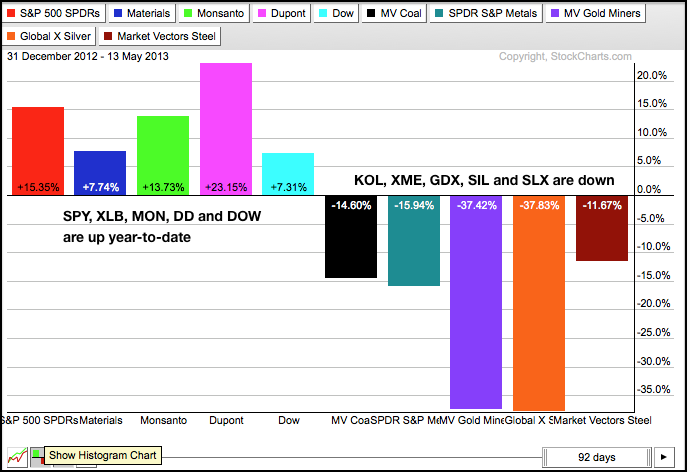

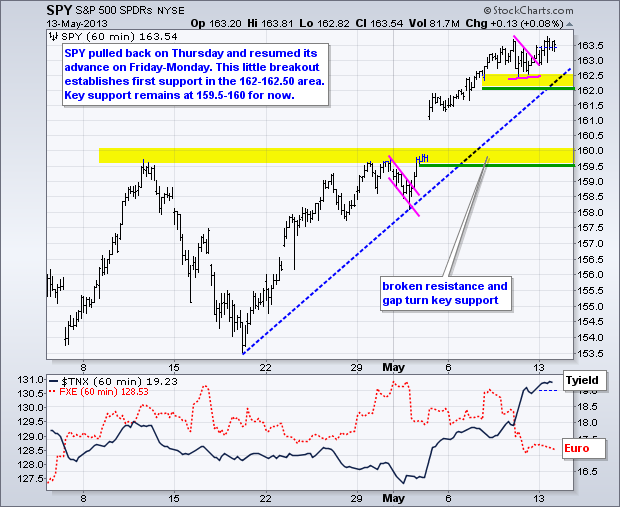
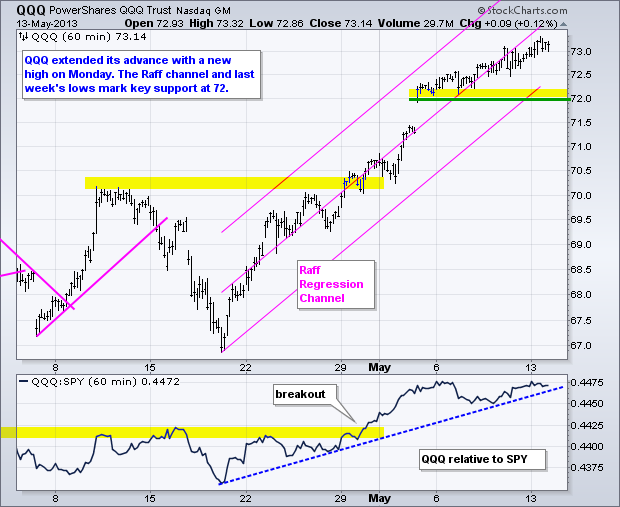
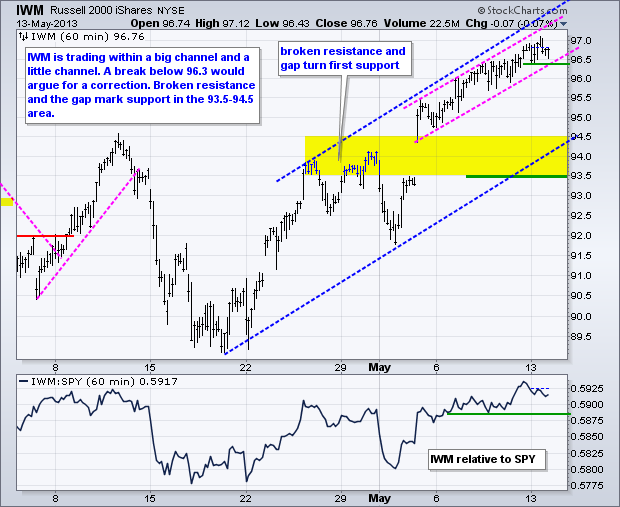
**************************************************************************

**************************************************************************
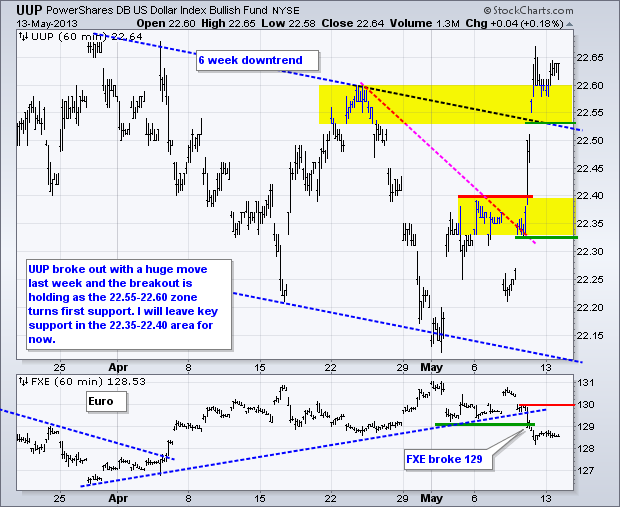
**************************************************************************

**************************************************************************

**************************************************************************
Key Reports and Events (all times Eastern):
Wed - May 15 - 07:00 - MBA Mortgage Index
Wed - May 15 - 08:30 - Producer Price Index (PPI)
Wed - May 15 - 08:30 - Empire Manufacturing
Wed - May 15 - 09:15 - Industrial Production
Wed - May 15 - 10:30 - Oil Inventories
Thu - May 16 - 08:30 - Jobless Claims
Thu - May 16 - 08:30 - Consumer Price Index (CPI)
Thu - May 16 - 08:30 - Housing Starts/Building Permits
Thu - May 16 - 10:00 - Philadelphia Fed
Thu - May 16 - 10:30 - Natural Gas Inventories
Fri - May 17 - 09:55 - Michigan Sentiment
Fri - May 17 - 10:00 - Leading Indicators
Charts of Interest: Tuesday and Thursday
This commentary and charts-of-interest are designed to stimulate thinking. This analysis is
not a recommendation to buy, sell, hold or sell short any security (stock ETF or otherwise).
We all need to think for ourselves when it comes to trading our own accounts. First, it is
the only way to really learn. Second, we are the only ones responsible for our decisions.
Think of these charts as food for further analysis. Before making a trade, it is important
to have a plan. Plan the trade and trade the plan. Among other things, this includes setting
a trigger level, a target area and a stop-loss level. It is also important to plan for three
possible price movements: advance, decline or sideways. Have a plan for all three scenarios
BEFORE making the trade. Consider possible holding times. And finally, look at overall market
conditions and sector/industry performance.

About the author:
Arthur Hill, CMT, is the Chief Technical Strategist at TrendInvestorPro.com. Focusing predominantly on US equities and ETFs, his systematic approach of identifying trend, finding signals within the trend, and setting key price levels has made him an esteemed market technician. Arthur has written articles for numerous financial publications including Barrons and Stocks & Commodities Magazine. In addition to his Chartered Market Technician (CMT) designation, he holds an MBA from the Cass Business School at City University in London.
Learn More





